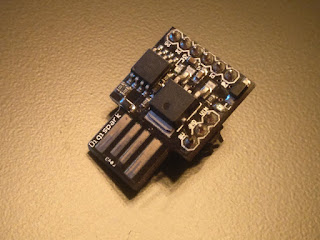Quick tip: Turning welding electrodes into long 3mm shafts/rods.
I've been doing more and more projects where I need smooth linear motion and there are many ways to achieve it, but for small projects things like 12mm precision ground hardened steel shafts are a bit much. I have a small and light CNC project going on and I need a smooth and straight shaft for the linear motion.
Something like a 3mm shaft from a CD/DVD drive would have been perfect if not for the fact that, for what i'm doing right now, they're too short. So I started thinking up ways of making the shaft out of something. It had to be readily available, preferably something I already had, something straight and relatively precise. With "3mm shaft" still in my head I quickly remembered that I have a pack of 3mm electrodes and from what I remember those are pretty straight, so I went to my garage and came back with a few 3mm electrodes along with some 2mm electrodes.
Taking a closer look at them they do seem very straight, this might work out but I had to figure something out about getting that flux off.
I have actually been using welding electrodes just for the rod and not for welding in other projects and I do have a way of getting the flux off but it involves banging the electrode with a hammer and that does not really scream precision. But I thought what the hell, might as well bang the flux off and see what I end up with.
Of course I didn't just smash the electrode and expect it to stay straight, instead I used a flat block of wood as backing and light taps with the hammer, just enough to crack the flux away. After that most of the flux was off but there were still some small pieces stuck to the rod. To get the remaining flux off the rod I sanded the rod with coarse sandpaper. The surface finish wasn't too great but I got to see how straight the rod still was and much to my surprise it was looking pretty good.
To get the surface to an acceptable finish I chucked the rod in my drill and took some 2000 grit sandpaper. As soon as I spun the rod I got to appreciate the straightness of the rod as there was no visible wobble. The sandpaper got clogged and hot really quick but some soapy water solved that problem and I was good to go. It didn't take much sanding before the rod started shining pretty nicely, some deeper marks were still visible but I wasn't too bothered by them.
At this point I thought the shaft was good enough so I took a 3mm bushing and slid it onto the newly made shaft. It did go on and despite a couple tight spots the shaft was bang on. A little bit of sanding later and my bushing was running smooth as butter. The slightest flick would make the bushing glide across the shaft. In the below picture you can see a close up of the homemade 3mm shaft (bottom) next to a shaft from a DVD drive (top).
So in the end I was able to make a usable shaft out of a 3mm welding electrode that i'll most certainly be using in a future project. One problem I see with this method is that the shaft is rather soft, I might be able to quench harden the shaft to make it stiffer but that could introduce other problems like warping or surface pitting/scaling. Also there's the possibility of rust but some oil or grease will keep that from happening.
Well that's it for now, i have a bunch of projects going on right now so more posts are bound to come.






Komentarai
Rašyti komentarą